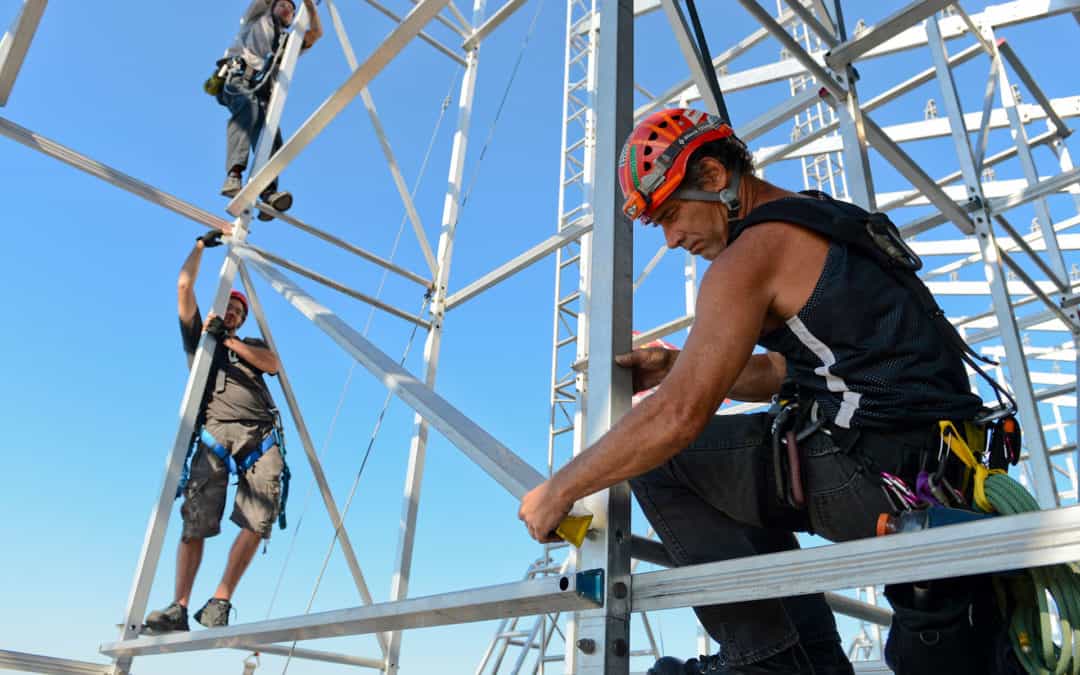Any significant construction, restoration, or repair project on a building larger than a doghouse likely involves the use of scaffolding. Sixty-five percent of construction projects in the United States involve the use of scaffolding by an estimated 2.3 million workers, according to the federal Bureau of Labor Statistics (BLS). With that many people and that much usage, construction accidents and serious injuries are apt to happen.
Falls from scaffolding accidents are among the most common construction and worksite accidents in New York. These kinds of falls are all-too-frequent and can be the result of negligence, improper equipment or scaffold setup, or inattentiveness from other workers. No matter what caused the accident, there are some serious consequences and injuries that can result from them, so be aware of the dangers from such a fall.
Perhaps the most common type of injury from a scaffolding accident is a crush or compression injury. This occurs due to the impact with the ground or other surface after falling from a height. The higher up you are when you fall, the more speed you will have when you hit the ground, which makes the impact more forceful. Crushing injuries from a scaffolding fall can result in broken bones, serious bruising, and even concussion. Damage to internal organs can also occur as a result of a fall and impact, which can be difficult to detect, so seek medical assistance after any serious fall.
Head injuries commonly occur as a result of a scaffolding accident in New York. These types of injuries can be very serious and result in brain damage or traumatic injury. There are a wide range of affects that can come from brain damage, including sensory loss such as blindness or hearing loss, difficulty speaking or recognizing people, and an inability to function on a daily basis. Serious brain damage can also lead to swelling that can be potentially fatal, making head injuries from a scaffolding accident more serious than just about any other type.
Neck and back injuries to the spine after a fall can be very severe and anyone who suffers such an injury should not be moved after the accident. Only emergency medical personnel should move someone who has potentially injured the neck or back. Spinal damage can result in tremendous ongoing pain and diminished mobility, which often requires long-term treatment, surgery, and physical therapy to recover completely. Serious injuries to the neck and back can even result in life-long paralysis.
Scaffolds are used by builders and construction workers to elevate themselves, materials and equipment. Sadly, however, what goes up on scaffolding sometimes comes down suddenly and unexpectedly, leading to injuries or death. BLS statistics indicate that scaffolding accidents result in 4,500 injuries and over 60 deaths each year and that almost 30 percent of all workplace deaths from falls involve scaffolding or ladders.
Scaffolding’s potential for tragic injuries – whether to construction workers, pedestrians, or others near work sites – is one reason that the Occupational Safety and Health Administration (OSHA) has established extensive and detailed safety rules regarding the assembly and use of scaffolds and the training and precautions workers need to take.
OSHA revised and strengthened these standards after a 1996 BLS study revealed that 25 percent of workers hurt in scaffold accidents received no scaffold safety training, and 77 percent of scaffolds lacked guardrails. But as stringent as these rules are now, they may not always be followed, and compliance can’t prevent all accidents.
Scaffold support or planking giving way, either due to defective or damaged equipment or improper assembly, leading to falls and injuries to those below. Slipping or tripping while on a scaffold due to such factors as slippery surfaces, an unsafe incline or insufficient planking, leading to falls where guardrails, a safety harness, or proper training were lacking. Falling objects hitting either a worker on a scaffold or those below.
Other scaffold accidents can involve improper placement of scaffolds and equipment too close to power or other utility lines, leading to electrocution. The very nature of scaffold accidents –usually involving people and objects falling from significant heights – means that when accidents happen, the injuries that follow tend to be serious or fatal.
Any injury from a fall due to a scaffolding accident is serious and medical assistance and treatment should be sought immediately after such an event. Depending on the nature of the accident, someone may be liable for what happened and responsible for your medical bills, loss of income, and pain and suffering.
If you or someone you know has been injured, call HURT-511 and our personal injury lawyers help injured workers recover the benefits to which they are entitled by law. For a free consultation with an experienced workers’ compensation lawyer, call us toll-free at 800-4878-511 or complete our online form. Our firm handles accident and injury claims throughout all five boroughs of New York.
HURT-511 operates in all boroughs of New York including all Bronx neighborhoods, namely: Bedford Park, Belmont, Fordham, Highbridge, Hunts Point, Jerome Park, Kingsbridge, Morris Park, Morrisania, Mott Haven, Parkchester, Riverdale, Spuyten Duyvil, Throgs Neck, University Heights and Woodlawn.





 Trusted Reviews
Trusted Reviews



